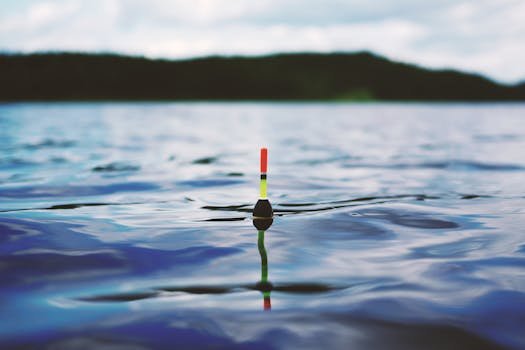How Fish Change Depth with the Seasons: A Beginner’s Guide to Finding the Right Water Layer
🎯 Why Fish Move Up or Down in the Water
Have you ever spent hours waiting for a bite—only to come up empty-handed? One common reason: you’re fishing at the wrong depth.
Fish are surprisingly sensitive creatures. They move up or down in the water depending on the season, water temperature, oxygen levels, sunlight, and—of course—where their next meal is. If you know how these patterns shift through the year, you’ll be one step ahead of them.
This guide breaks it down in a simple, beginner-friendly way—so you can match your tactics to the season and finally start catching more, not just casting more.
🌱 Spring: Shallow and Lively Near the Banks
As the ice melts and water warms up, fish shake off their winter sluggishness. They move into shallow waters to feed and get ready to spawn.
- Best Times: Early morning and evening
- Where to Fish: Mid to upper layers near shorelines, especially where plants are growing
🎣 Spring Tips:
- Try casting near weedy areas, inlets, and protected coves
- Float rigs, live worms, and soft plastic lures work wonders
- Great time to go after: bass, crappie, and sunfish
☀️ Summer: Head Deeper When It Gets Hot
Once summer hits full swing, surface waters heat up fast. To stay comfortable, fish head deeper where the water is cooler and holds more oxygen.
- Best Times: Fish shallow in the early morning and evening; go deeper by midday
- Where to Fish: Under docks, near drop-offs, or in deep pools
🎣 Summer Tips:
- Use jigs, weighted rigs, or Carolina rigs to reach those cooler depths
- Target shady spots or structure—fish love cover when the sun’s blazing
- Common catches this season: catfish, walleye, and bass
🍂 Fall: Feeding Frenzy at Every Depth
Fall is fishing gold. Fish start eating like crazy to bulk up before winter, which means they can show up just about anywhere.
- Best Times: All day long
- Where to Fish: Be flexible—start shallow, move deeper if needed
🎣 Fall Tips:
- Use faster baits like crankbaits and spinnerbaits to match their energy
- Look for fish chasing baitfish around points, flats, and weed lines
- Active species this time of year: trout, perch, and largemouth bass
❄️ Winter: Slow and Steady Down Deep
Cold weather means slow metabolism. Most fish settle into deeper water where temperatures are stable and stay pretty inactive.
- Best Times: Late morning through early afternoon, when the water’s warmest
- Where to Fish: Bottom zones, especially in deep holes or near dam walls
🎣 Winter Tips:
- Fish slow with small jigs or live bait
- Patience is key—bites are subtle
- Top targets: trout, crappie, and walleye
📊 Quick Reference Chart: Seasonal Fish Depth
| Season | Best Time to Fish | Where to Find Fish | Fish Behavior |
|---|---|---|---|
| Spring | Morning & Evening | Shallow to mid-depth | Feeding & spawning near shore |
| Summer | Early morning / Midday | Shallow (AM), Deep (PM) | Heat escape, deeper midday |
| Fall | All day | All depths | Aggressive, chasing food |
| Winter | Late morning / Afternoon | Deep water | Inactive, conserve energy |
🧭 Beginner Tips: How to “Read” the Water
Learning to spot clues in your surroundings can lead you straight to fish:
- Watch for weed lines, drop-offs, and shadows
- Notice where birds are diving—they follow baitfish, just like predators do
- Use apps like Navionics or Fishbrain to see underwater structure
✅ Pro Tip: Color changes in the water often signal depth transitions—light to dark usually means it’s getting deeper.
🐟 Final Thoughts: Follow the Fish, Not Just Your Gut
Fish move with the seasons—and so should you. Understanding fish depth by season gives you the edge, especially when you’re just starting out.
Don’t waste your time blindly casting—adjust your depth, choose the right spot, and let nature guide you.




